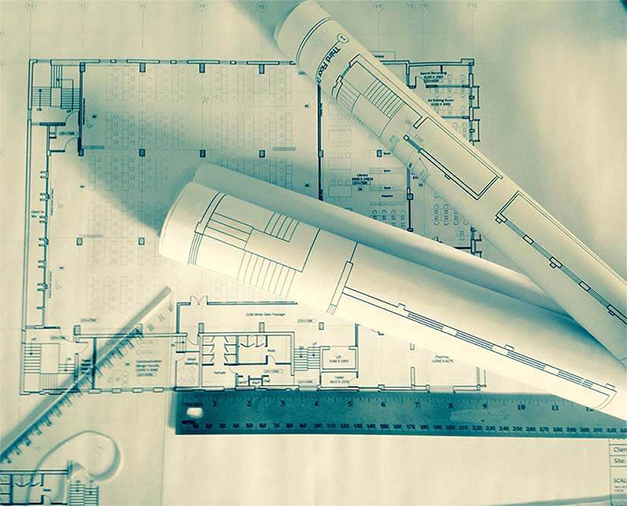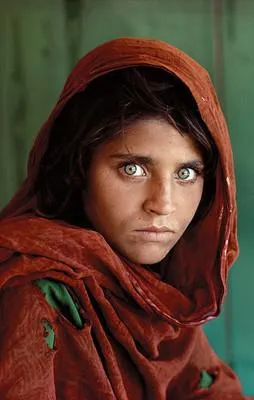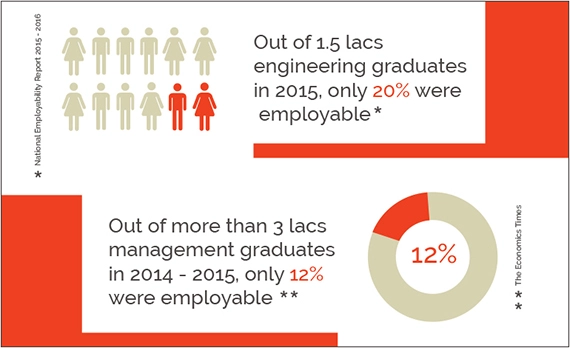Overview:
This comprehensive article traces the transformation of India's fashion landscape from traditional craft-based clothing to a modern, global industry. It examines key milestones, including the rise of designer labels, establishment of fashion weeks, and the impact of liberalization. The piece explores how Indian fashion has balanced cultural heritage with contemporary trends while adapting to changing consumer demands.
Table of contents:
Indian fashion scenario is known for its cultural heritage, elegance, and colourfulness. It brings out the subtlety and beauty which has sustained through innumerable decades. For not only is it comfortable, sophisticated and aesthetically beautiful but it has also evolved over time. Making a sweeping surge into today’s global scenario, the fashion industry in India is an amalgamation of dynamic conventions. From ethnic to western, salwar kameez to high-street fashion; fashion industry in India has definitely gone through a milieu of transformations. Needless to say, the fashion industry in India has been advantaged by thousands of years of rich tradition behind it and the knowledge as the vogue of sewn garments have existed in India ever since ancient history.
The textile industry in India is among the largest segment of India’s capital goods sector. As per the report published by Indian Brand Equity Foundation (IBEF), India is the second largest exporter of textiles in the world. Furthermore, favorable demographics and rising income levels are believed to be the key growth drivers of the Indian textile and apparel sector in the coming years.
The fashion industry in India covers a wide range of clothing from ornate clothes designed for wedding ceremonies to casual wear. The Indian traditional techniques of embroidery like Crewel, Chikhan, and Zardosi have paved their way into the international forefront of fashion runway portraying Indo-western clothing in a fusion of the best of East and West. Apart from these, India also represents a unique blend of sarees woven in silk and cotton like Kanjivaram, Mysore, Pochampalli, Jamdani, Blucher, Pithani, Benarasi, Bandhini, Sambhalpuri etc.
In the 5th century BC, Herodotus, a Greek historian elucidated the productiveness of the quality of cotton clothes in India. The Fashion scenario in India has an interesting history to ponder upon, let’s look at the transformation of Indian fashion industry through the ages:
Transformation of Indian fashion industry through the ages
Ancient Civilization:
Dating back to the Mohenjo Daro civilization, the earliest preliminary version was found in the statue of Mother Goddess wearing a piece of cloth around her waist. Her torso was covered with jewels. Apart from this era, the ancient Vedic literature states the existence of Phataka made from leaves and barks. The 11th Century B.C Rig Veda states the existence of Paridhan (dyed) and Pesas (embroidered) garments and traces the development of refined fabricating techniques of apparels during the Vedic age. By the 2nd century AD, the muslin clothes produced in the southern part of India were merchandised to the Roman Emperors. The evolution of stitched and tailored garment in India is traced even before the beginning of the 10th Century AD which was further proposed around the 15th century by the Muslim empires of India.

- Fashion scene in Ancient Civilization. Image Source: Pinterest
Impact of British Raj:
The advent of British Raj in India encouraged the British industrial cloth in India. With this, the development of Khadi, a hand woven material was boosted in India in order to lessen the dependency of Indians on the British Industrial goods.
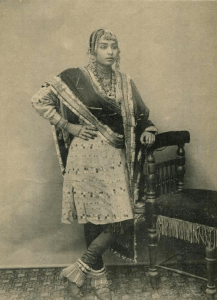
- Fashion scene in India during British Raj. Image Source: Pinterest
The 1920s:
1920s is also known as the ‘Roaring Twenties’ in the fashion parlances. This decade is also termed as the ‘Charleston Era’ in the Fashion world. In this era, women discarded restricted fashion and switched over to comfortable clothes likes skirts and trousers. As part of this trend, Eton cropped hairstyle came into vogue. Cholis in India started appearing like the shimmering glitz and flash of Charleston dresses. These dresses were long sleeved and were made using lace, satin, cotton or silk. Sarees with long sleeve and mid-sleeve blouse also became quite popular around this time.
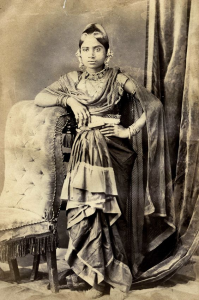
- 1920s Fashion scene. Image Source: Pinterest
Post Wall Street Crash or the 1930s:
The Wall Street Crash also known as Black Tuesday was the most devastating stock market crash in the history of the United States. The Post Wall Street Crash is the era of the 1930s. This era marked the emergence of the Bonnie and Clyde (Bonnie Elizabeth Parker and Clyde Chestnut Barrow, American Criminals) look in the fashion world. This particular look signified a daring and flamboyant attitude. This look became quite popular in the US, India and across the world where Hemlines descended to mid-calves and long collars, two-piece suits, and pinched waists dominated the fashion scene.
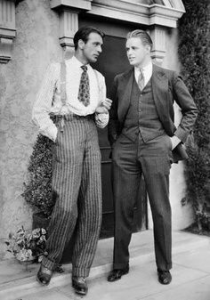
- Influence of Post Wall Street Crash. Image Source: Pinterest
The 1980s to 1990s:
This era was characterized by expansion of Fashion schools in India which was tagged by an outbreak alteration to Fashion in Indian clothing. It also marked the entrance of women in the workforce at a huge pace. The 80s brought the advent of Disco with an introduction to some shimmery and glittery costumes, denim and leather biker jackets, and chiffon sarees in varied colors with a fusion of Indian and western clothing styles. The 1980s also marked the active participation of women in the Indian Fashion Industry and altering Indian attitudes towards multiculturalism.
The 90s marked the arrival of full-sleeve salwar kameez, floral dresses, long skirts, denim, shades, and dungarees. The decades following the 90s are touted to be the era when Indians adopted more westernized concept in the fashion making bold and stylish choices.
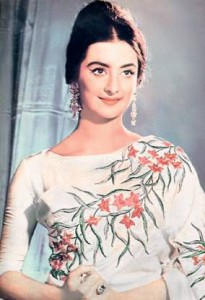
- The Bollywood era in Fashion. Image Source: Pinterest
The 21st Century:
The beginning of the 21st century brought about a stable and clear picture of the Indian Fashion Industry. As women became independent, pants, short skirts, and bold costumes and fashion became more cosmopolitan than region specific. This transformation is majorly seen in the style of wearing blouses and sarees these days. Halter-neck, back-button blouses, high-neck blouses, Katori style and puffed sleeve blouses have become the first preference of women rather than the traditional style of blouses. Sarees are draped mostly in Gujarati style and it would be right to say that Indian fashion scene is greatly influenced by its film industry time and again
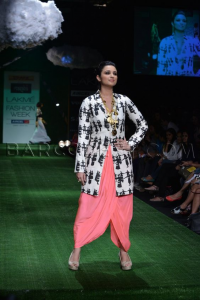
- Modern influence in Fashion. Image Source: Pinterest
The era of Brands:
The market for branded clothes is emerging in India. An ever-increasing number of people are getting inclined towards branded garments as they provide quality affirmation. Liberty shirts were the main organization to offer shirts under its brand name in India amid 1950's. Since then, numerous national and global brands have built up themselves in Indian fashion industry. Allen Solly, Van Heusen, Louis Philipe, Charagh Din, Raymonds, Arrow, and so on are some driving national brands today. The branded attire showcases a growth as a result of growing demand for denim. Many global brands entered the denim business in India as Levi Lee, Seven Jeans, Pepe Jeans, and so forth. Branded attires mark a significant contribution to the evolution of Indian fashion industry.

- The influence of brands in fashion. Image Source: Pinterest
Growing trend of Fusion:
The advent of fusion wear has revolutionized the Indian fashion scenario in many ways. The blend of contemporary, vintage and indo-western has become tremendously popular in last couple of years. Fusion wear celebrates the beauty of both the world and the Indian fashion industry. It has evolved to such an extent that top-notch fashion brands contain the same element in their collection. The fusion wear is gaining enormous popularity with the introduction of the long maxi with collars, hanky hems, cold shoulder maxi, crop-tops, heavy duty capes, and tunics. While, kurtas, lehengas, indo-western tops and spaghetti kurtas are turning lots of head. The fashion trend in India has been influenced by the foreign designers and brands who also introduced the concept of corporate dressing. The corporate style survives to date with an added element of modernity ensuing the fusion wear.
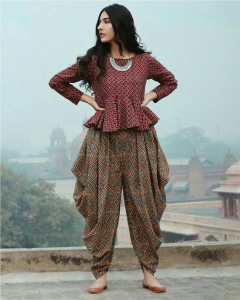
- The Fashion fusion. Image Source: Pinterest
India is a land of multiculturalism and the massive diversity is reflected in the variation of traditional garments and the dressing styles that differ from one state to another, which is rare to spot elsewhere in the world. It has traveled from one subculture to another since ages and the traces of Indians being stylish can be discovered right from the times of Harappa and MohenjoDaro. With the advent of globalization, numerous changes have taken place in the Indian fashion industry.
According to a report by Economic Times, the Indian Fashion Industry marks a growth of USD 100 billion and at a CAGR of 8-10 percent offline, the online fashion segment is expected to grow by 15-20 percent over the next five years. The market for the fashion industry in India, especially for women, is quite lucrative in terms of scope and variety. Today, while the rapid growth of information technology popularised the corporate look, the revival of the ethnocultural look has become quite dominant leading to the popularisation of the traditional forms of art and crafts. Of late, the International fashion brands have begun to focus on the immense potential of this sector offering heaps of opportunities to the in-house fashion designers. Indian fashion industry has expanded to such an extent over time that it has now come at par with the international fashion industry and has become one of the most popular revenues generating industries of India.
PLAGIARISERS BEWARE!
This Website and its contents are subject to copyright protection under the Indian Copyright laws and, through international treaties for/ of other countries. The copyright in the contents and materials available on this Website as a whole is owned by the IIAD. However, the copyright in some contents and materials incorporated within this Website may be owned by third parties where so indicated. No part of the contents or materials available on this Website may be reproduced, licensed, sold, published, transmitted, modified, adapted, publicly displayed, broadcast (including storage in any medium by electronic means whether or not transiently for any purpose save as permitted herein) without the prior written permission of IIAD. The visitor may view this Website and its contents using Web browser and save an electronic copy, or print out a copy, of parts of this Website solely for visitor’s own information, research or study, provided the visitor (a) do not modify the copy from how it appears in this Website; and (b) include the copyright notice “© 2014 to 2018 Indian Institute of Art and Design (IIAD). All rights reserved.″ on such copy.
IIAD’s logo/ name should never be removed from pages on which they originally appear. The webpages should always appear exactly as posted without variation unless the prior written approval of the Organisation is obtained.
Explore More
- Dive into the evolving landscape of "Indian Fashion Industry: Retail & eCommerce" and discover how digital transformation is reshaping traditional retail models in the fashion sector.
- Learn how AI, AR, and digital innovations are revolutionizing the industry in our analysis of the "Impact of Technology on the Fashion Industry."
- Master effective brand communication strategies with our guide on the "Importance of Communication in the Fashion Industry."

